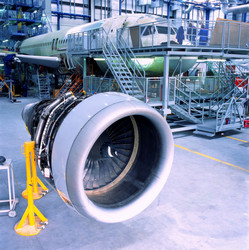Additive manufacturing gets a boost
Aircraft engine manufacturers are increasingly pressed to reduce the environmental impact of air transport while enhancing performance and decreasing costs. A revolutionary manufacturing technique first introduced in the 1980s may provide the means to make this possible. Additive manufacturing is distinguished from traditional subtractive machining techniques that rely on the removal of material by cutting or milling. It follows an additive process where small amounts of materials are applied in successive layers, building up 3D parts of virtually any shape from a digital model. Although extensively used for prototyping, the direct application of this concept in manufacturing was to date limited because of low productivity and inferior material properties. The EU-funded project MERLIN(opens in new window) (Development of aero engine component manufacture using laser additive manufacturing) has now advanced the state of the art. Specifically, two additive manufacturing technologies were further developed: laser metal deposition (LMD) and selective laser melting (SLM). Laser techniques offer the potential for accurate and small feature creation as well as good surface finish, which cannot be delivered by electron beam and arc-based additive manufacturing. SLM uses a scanned laser spot on a bed of powder, locally fusing the powder in a predetermined pattern with accuracy ranging from 50 to 250 μm. On the other hand, LMD makes use of a laser to process powder to build up self-supporting 3D structures as small as 200 μm. In the time frame of the MERLIN project, these two techniques showed significant promise for high-performance aircraft parts. They allowed for entirely new product designs currently not possible to manufacture using conventional processes such as casting and machining. In addition, both laser-based additive techniques supported complex geometries for advanced product functionality in a wide range of complex alloy materials. Ten generic demonstrators and aero engine components were produced to demonstrate the benefits. Project partners also delivered non-destructive testing specifications for both LMD and SLM, including hardware requirements of in-line laser and conventional ultrasonic testing systems. Monitoring and control techniques were developed for in-process geometrical validation. The MERLIN project has resulted in high-value, disruptive additive manufacturing technologies that are capable of step change in performance. Together with the ability to deliver lightweight, high-performance parts, the technology should have positive impact on the environment and the competitiveness of the aerospace industry.







